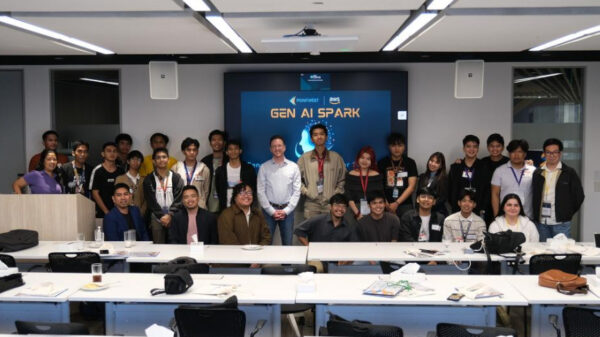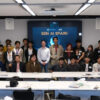As more businesses are discovering the necessity of moving to the cloud, it’s ability to allow businesses to take better control of their destiny is being highlighted.
This is according to Andy Jassy, SVP at Amazon Web Services Inc. (AWS), who said that shifting to the cloud has become a necessity as the cloud has become the new normal for all companies. Businesses, said Jassy, often shift to cloud because of various reasons – i.e. the move from capital expense (CapEX) to variable expense, lower variable expense, stopping of guessing capacity, and increased agility.
“But why the excitement to move to the cloud? It’s very much about freedom and the ability to control their destiny. This is why cloud has grown so quickly,” Jassy said.
For Jassy, moving to the cloud – and moving to AWS, for that matter – “affords businesses certain freedoms, and the ability to control their business’ destiny”.
Jassy said that AWS has a “large business in APAC, where we see traction in all business segments”.
Jassy, nonetheless, stated that the APAC trajectory is akin to growths in other regions since this is “the same all over the world”, as more and more industries move to cloud – or at least consider AWS in the shift to cloud – including media, healthcare, government, consumer product goods and consumables. AWS is currently available to customers from 11 regions in the US, Brazil, Europe, Japan, Singapore, Australia, and China with 30 availability zones.
“The commonality is pretty similar. People care a lot about having lots of functionalities. And they care about being price effective, about performance, about security… It’s the same in all regions,” Jassy said.
And so, while “the pricing (of AWS’s offerings) can be different depending in the regions, but in every region where we operate, (there’s the recognition now that) it’s always better to operate in the cloud than on premises.”

“But why the excitement to move to the cloud? It’s very much about freedom and the ability to control their destiny. This is why cloud has grown so quickly,” said Andy Jassy, SVP at Amazon Web Services Inc.
PHOTO COURTESY OF AWS
Already, AWS has more than a million active customers in 190 countries, including nearly 2,000 government agencies, 5,000 education institutions and more than 17,500 nonprofit organizations. AWS earnings for the first quarter of 2015 reached $5 billion, a figure 49% higher than Q1 2014.
TAPPING CLOUD’S PROMISE
Various APAC business are, of course, discovering – thus highlighting – the benefits that can be had by shifting to cloud.
iFlix, a TV-on-demand platform (similar to US-centric NetFlix, though serving the non-US markets), is “built mainly on AWS”, chief technology officer Ash Crick said to Upgrade Magazine.
iFlix needed a solution that was able to scale quickly as they were looking to have 10,000 hours of content within the first six months. This became even more urgent because within the first six weeks of launch, iFlix achieved 100,000 sign-ups; the number eventually reached 450,000 in three markets (the Philippines, Malaysia and Thailand).
Various AWS products helped iFlix start, and now help it prosper. For instance, to better understand subscribers’ preferences, iFlix uses Elastic Search to analyze their viewing behavior. It also used Amazon Kinesis for real time collection of data that will be used for analytics in the future.
“As a business model, we couldn’t have done what we did without having cloud. Removal of CapEx has a lot to do with our growth,” Crick said. “AWS encapsulated what we would have had to build. (Building on our own) requires time, requires money, et cetera. Turning to cloud simplified it for us.”
Other than Southeast Asia, iFlix is now looking at expanding into other parts of Asia, the Middle East and Africa.
Cloud also benefits gumi Asia, the Southeast Asia subsidiary of gumi Inc., which develops mobile game like the successful Brave Frontier. Other than running most of the games on AWS, gumi Asia uses AWS cloud-based data warehouse service, Amazon Redshift, for data ingestion to their internal system for big data analytics and reporting to: 1) determine popular game items, 2) when players are accessing the game, 3) when are they downloading the games, and 4) what features they like or dislike. The company also uses AWS for testing and development to ensure that bugs are fixed and game developers can try out new ideas to attract and retain players.
“We are constantly looking at cutting our infrastructural costs,” Nirav Doshi, technical director at gumi Asia, said to Upgrade Magazine.
gumi Asia “only” has 100 people in Singapore and another 100 in the Philippines (approximately 11 to 12 people are assigned per title/game), “so it won’t be good if we set up our own structure because we’re a small company,” Doshi said. “And because of the lean structure that we have, AWS is the best way for us. With (our cloud-based approach), what we have done before and now, we’re cutting our costs.”
gumi Asia’s most popular game, Brave Frontier, now has more than 30 million downloads on all platforms. The company has six games in iOS, Android and Windows.
Still other companies also using cloud (and AWS, in particular) are Jollibee (for its warehouse management, disaster management and migration stores) and GrabTaxi (which turned to AWS in its search for scalable platform).
BROADENING SERVICES
AWS announced new launches to further help customers’ tap the cloud’s potentials.
AWS Snowball and Amazon Kinesis Firehose provide AWS customers two new ways to more easily and cost-effectively get large data sets and streaming data into the AWS Cloud.
In particular, AWS Snowball is a petabyte-scale data transport appliance that can transfer 50 TB per appliance of data into and out of AWS; while Amazon Kinesis Firehose is a fully managed service for loading streaming data into AWS.
Amazon QuickSight is a cloud-powered business intelligence (BI) service that makes it easy for all employees, regardless of their technical skill, to build visualizations, perform ad-hoc analysis, and quickly get business insights from their data. More often, BI solutions require teams of data engineers to spend months building complex data models before ever generating a report, and these solutions lack interactive data exploration and visualization, limiting users to canned reports and pre-selected queries. QuickSight uses a new, Super-fast, Parallel, In-memory Calculation Engine (“SPICE”) to perform advanced calculations and render visualizations. It integrates automatically with AWS data services, enables organizations to scale to hundreds of thousands of users, and delivers fast and responsive query performance to them via SPICE’s query engine.
Meanwhile, AWS IoT is a new platform that makes it easy for devices — for instance, cars, turbines, sensor grids and light bulbs — to connect to AWS services so that companies can store, process, analyze, and act on the volumes of data generated by connected devices on a global scale.
According to Matt Tavis, AWS principal solutions architect, “the general approach is to make it all available in all markets.” In APAC, though, solutions often get a preview period, with the full launch depending on the period of time allocated to incorporate changes necessary to be made from customer feedback.
Pricing also varies according to market because of the “cost per region.” For instance, energy costs differ per region, so “some can be lower than others”.
RIPENING MARKET
Adam FitzGerald, AWS head of worldwide developer marketing, noted that – with “over a million active users in AWS from all over the world”, the company’s growth in Asia, including the Philippines, continues to be unprecedented, as it sees this part of the world a “very active market.”
In fact, the first community hero (a program designed to recognize and honor our most engaged developers who’ve had a real impact within the community) for Asia came from the Philippines.
With cloud adoption, “it doesn’t matter where you’re from,” FitzGerald said. “Because in general, they (the markets) are more the same than different – they look at innovating, coming up with solutions, et cetera. These are pretty much common all over the world.”
All the same, Richard Harshman, AWS head of ASEAN, noted the prominence of startups in Southeast Asia, and “what we’re finding is venture capitalists putting up money for (these).”
But Harshman said that “it’s not enough to just have an idea. What we find in Southeast Asia is (for businesses) to rush to the market.” He, instead, emphasized on the need to also pay attention to “how your architecture is going to fare.” Therefore, “take the time to do that proper analysis, instead of just rushing to the market. If the product fails, that may impact your presence in the market for good.”
To this end, and to help “ripen” the startups from these parts of the world, AWS has “programs and activities to help them with their architecture,” Harshmann said. “It’s a different journey for these companies; and a lot of it comes down to re-factoring (processes for them to) move forward. But they look at their IT state and reconsider, then the technology can be an enabling force. Cloud can be an enabler for them to go big.”
For more information, visit http://aws.amazon.com.






















































































































